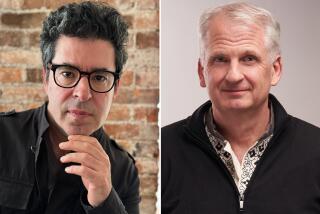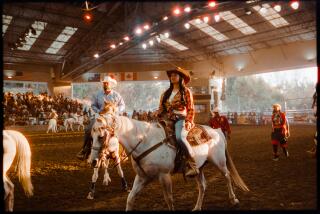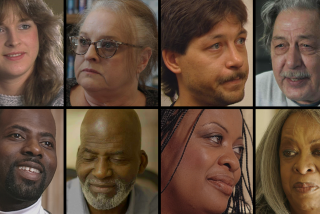Television review: ‘Freedom Riders’
In the cavalcade of American history, there are some stories that can’t be told too often. Our collective memory is appallingly short, and it is useful to be reminded that not only are we a work in progress, but also that progress, in the sense of more things improving for more people, can be bloody work. Entrenched interests like to stay entrenched, securing the status quo by means of “the law,” which has been written or rewritten to their satisfaction, and the brute force that backs it up.
Such was the state of some of the nation in May 1961, when 13 men and women, black and white, ages 18 to 61 — and including a young John Lewis, now a respected congressman from Georgia — boarded two buses in Washington, D.C., and headed south. Organized by the Congress of Racial Equality, or CORE, the trip was meant to end in New Orleans on the seventh anniversary of Brown vs. Board of Education; along the way, riders would violate Jim Crow laws, already declared unconstitutional yet still in local force. Stanley Nelson’s documentary film “Freedom Riders,” airing Monday on KOCE as part of PBS’ “The American Experience,” tells that story and, by focusing on a single chapter of a long struggle, fills its two hours with the sort of moment-to-moment detail that makes not only for persuasive reporting but also for suspenseful drama.
It is a simple story in the sense that one side was right, with all the moral authority, and the other wrong, with none, however much they might have believed otherwise. (“I have no doubt the Negro basically knows the best friend he ever had in the world is the Southern white man,” says one delusional Southern white man.) You know whom to root for. But even among people of goodwill, there are differences, and the CORE plan was not universally supported within the movement. There was also what might be described as a third side, the federal government, which itself needed to be prodded into action and which regarded the trip as an ill-timed distraction, exposing a deep strain of native racism just as President Kennedy was off to face Soviet leader Nikita Khrushchev at a European summit.
Though they had trained briefly to react pacifically to violence, the Riders did not expect the mobs that met them as they reached the Deep South: Outside of Birmingham, Ala., one bus was set aflame; in Birmingham, the remaining riders were attacked and beaten while police looked the other way. (Birmingham’s commissioner of public safety, Bull Connor, the bad man in so many civil rights stories, is also the villain here.) It’s suggested here that one reason for the rides may have been to raise CORE’s profile within the movement; what isn’t stated is that CORE had been around for 20 years by then and that the Freedom Ride was a sort of sequel to the similarly intentioned Journey of Reconciliation in 1947; both followed by a year Supreme Court rulings outlawing segregation in interstate travel.
As the CORE activists met resistance, a second wave of riders — mostly students from Nashville, but battle-hardened, having desegregated that city’s lunch counters the year before — arrived as reinforcements; they signed their wills before departing. Pauline Knight-Ofosu remembers, almost as if beginning a ballad: “I got up one May morning and I said to my folks at home, ‘I won’t be back today because I’m a Freedom Rider.’” More than 430 eventually joined, many pointedly traveling to Jackson, Miss., specifically to be arrested. Many wound up in the Mississippi State Penitentiary, where their swelled ranks annoyed the guards with singing. In September, the Interstate Commerce Commission, previously in no hurry to exercise its authority, finally ordered the “whites only” signs removed from bus stations.
More to Read
The biggest entertainment stories
Get our big stories about Hollywood, film, television, music, arts, culture and more right in your inbox as soon as they publish.
You may occasionally receive promotional content from the Los Angeles Times.











